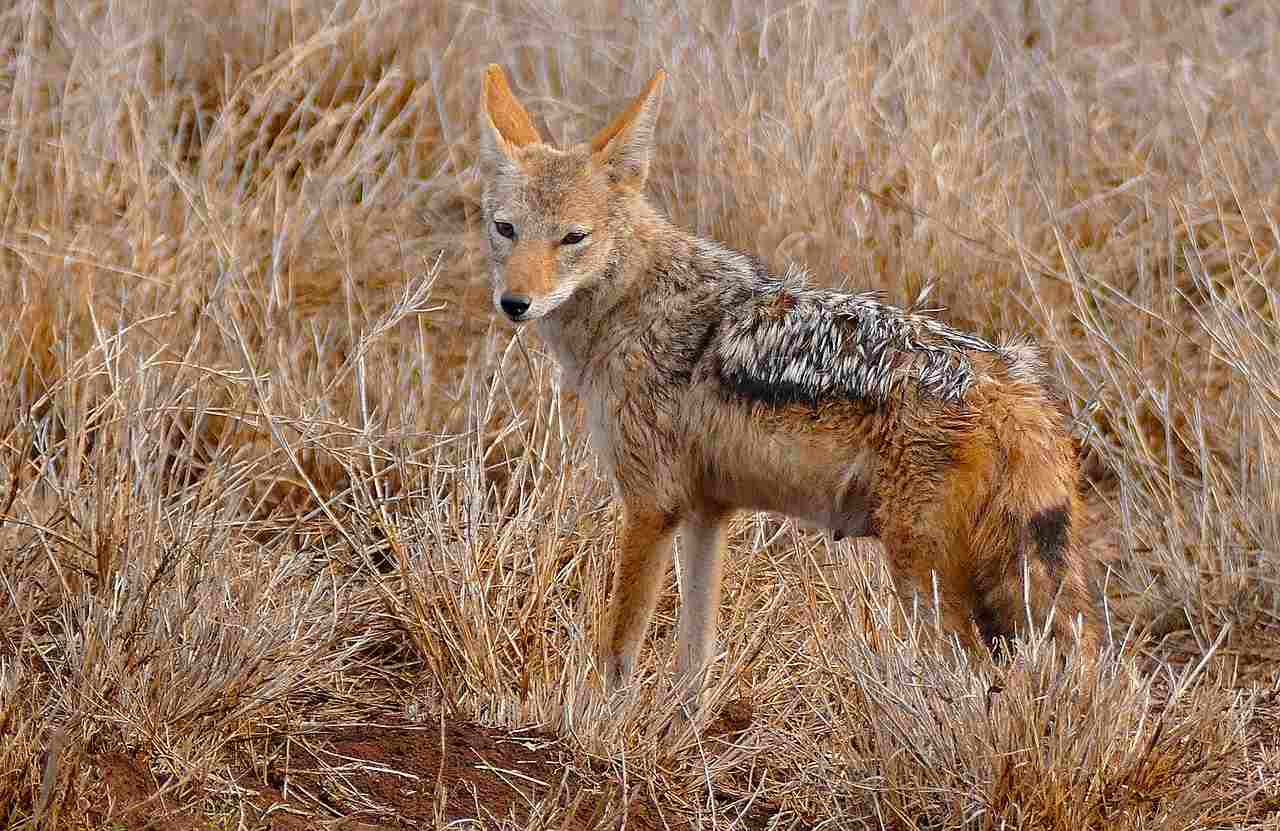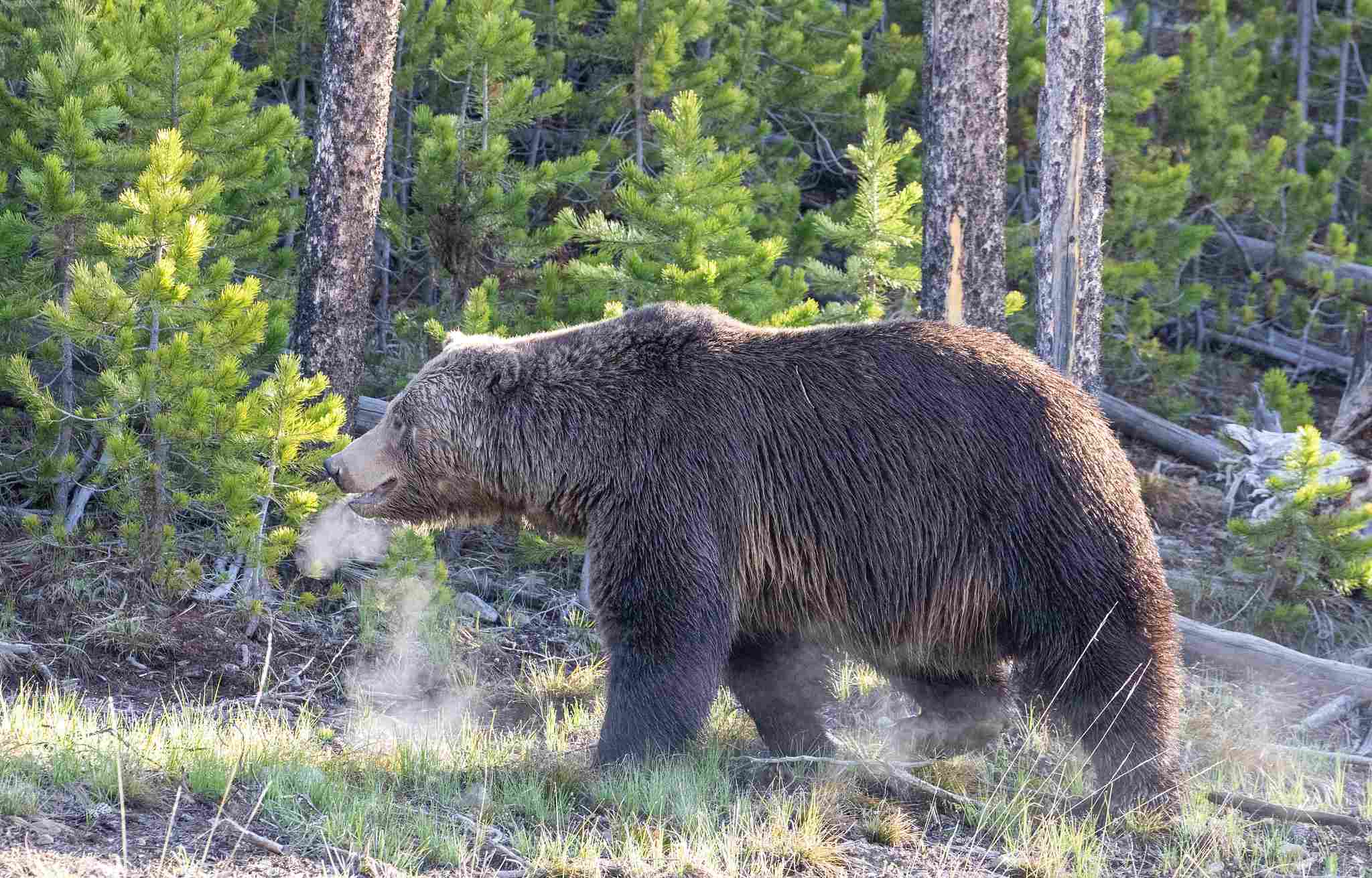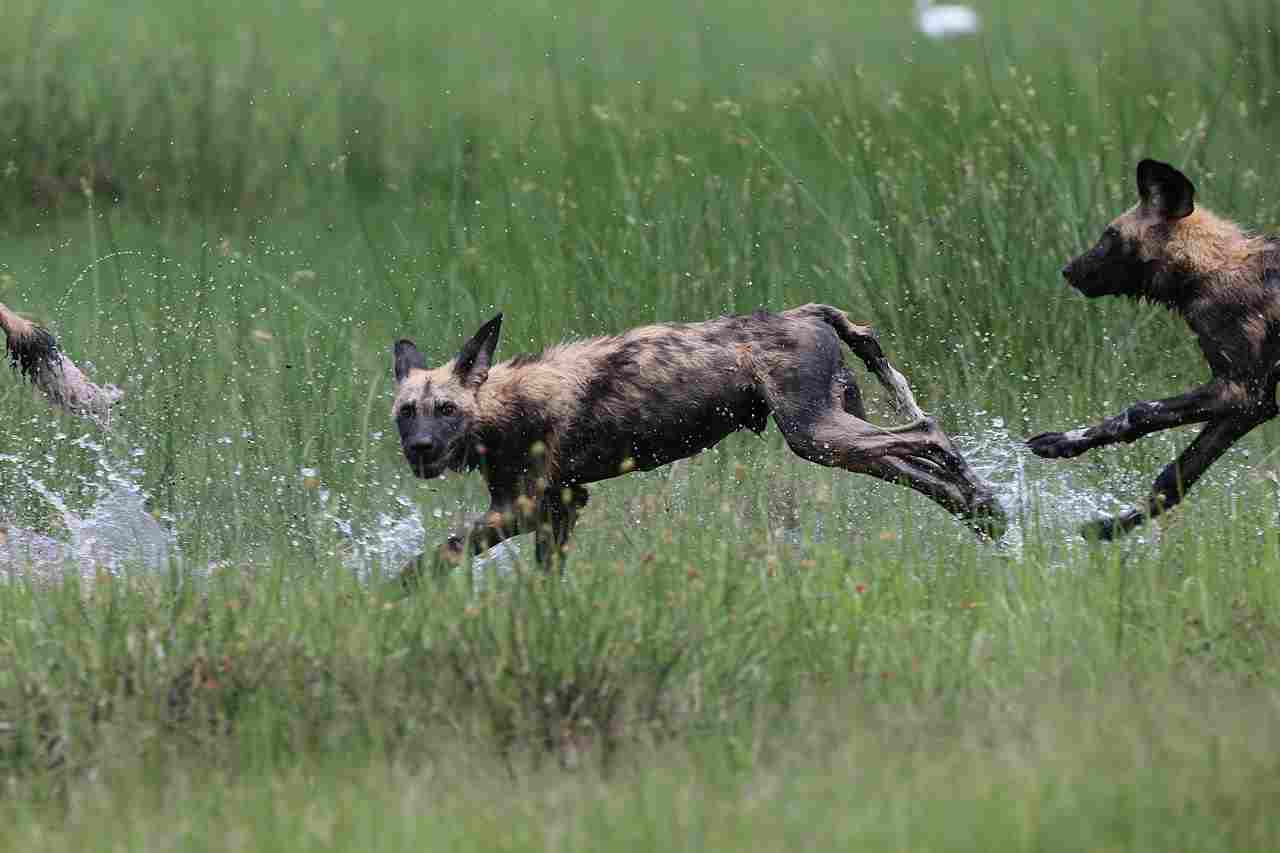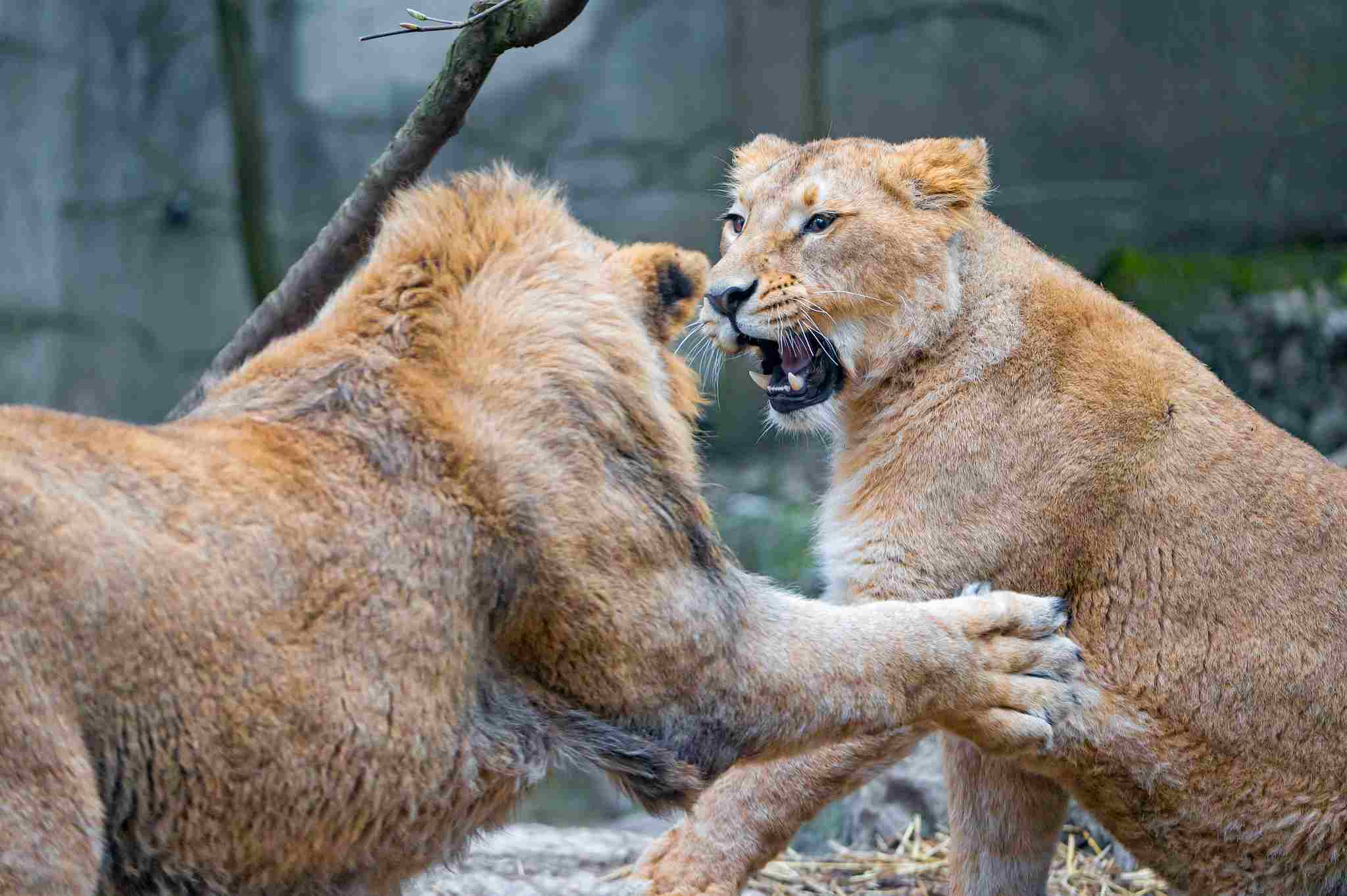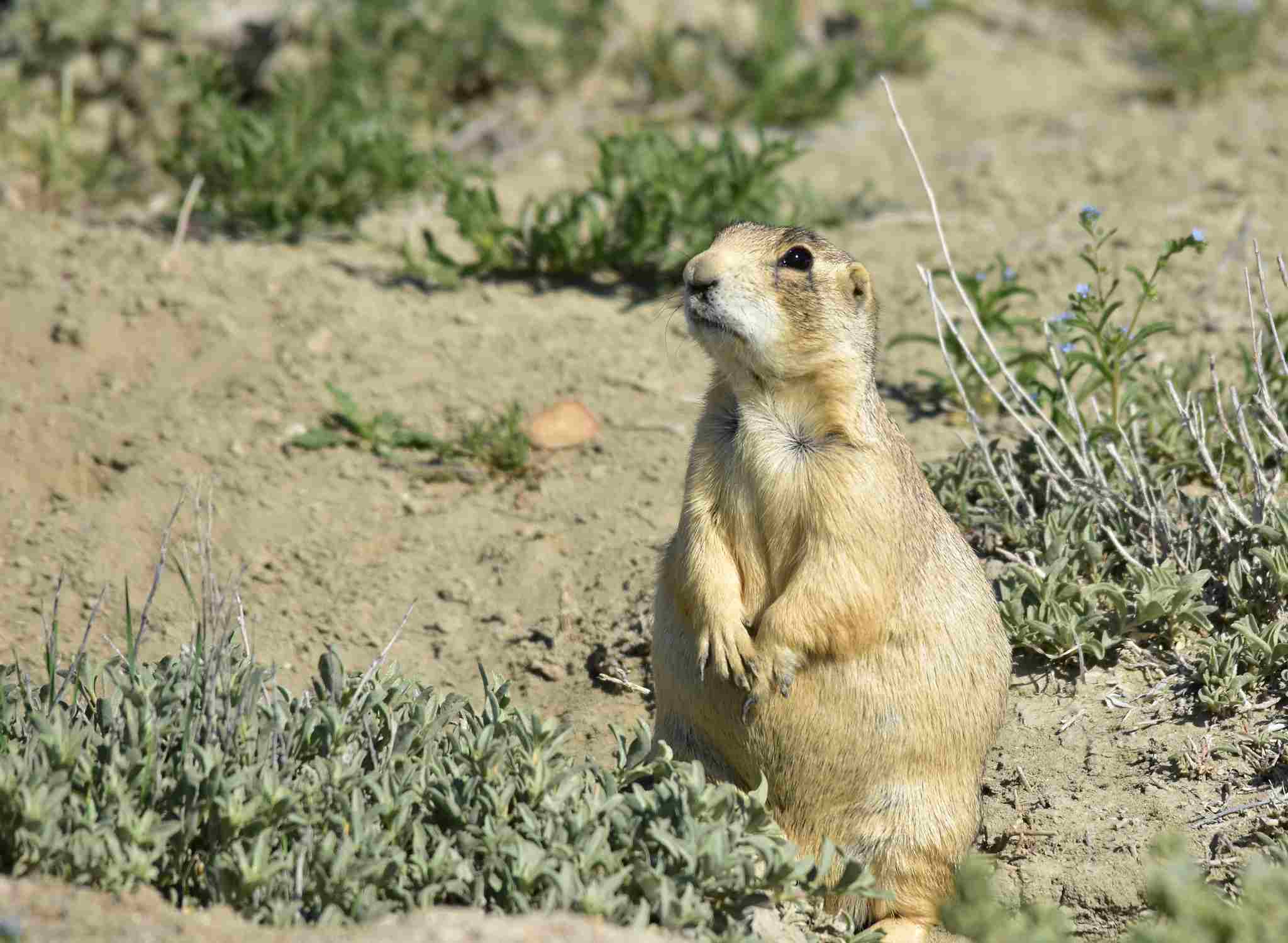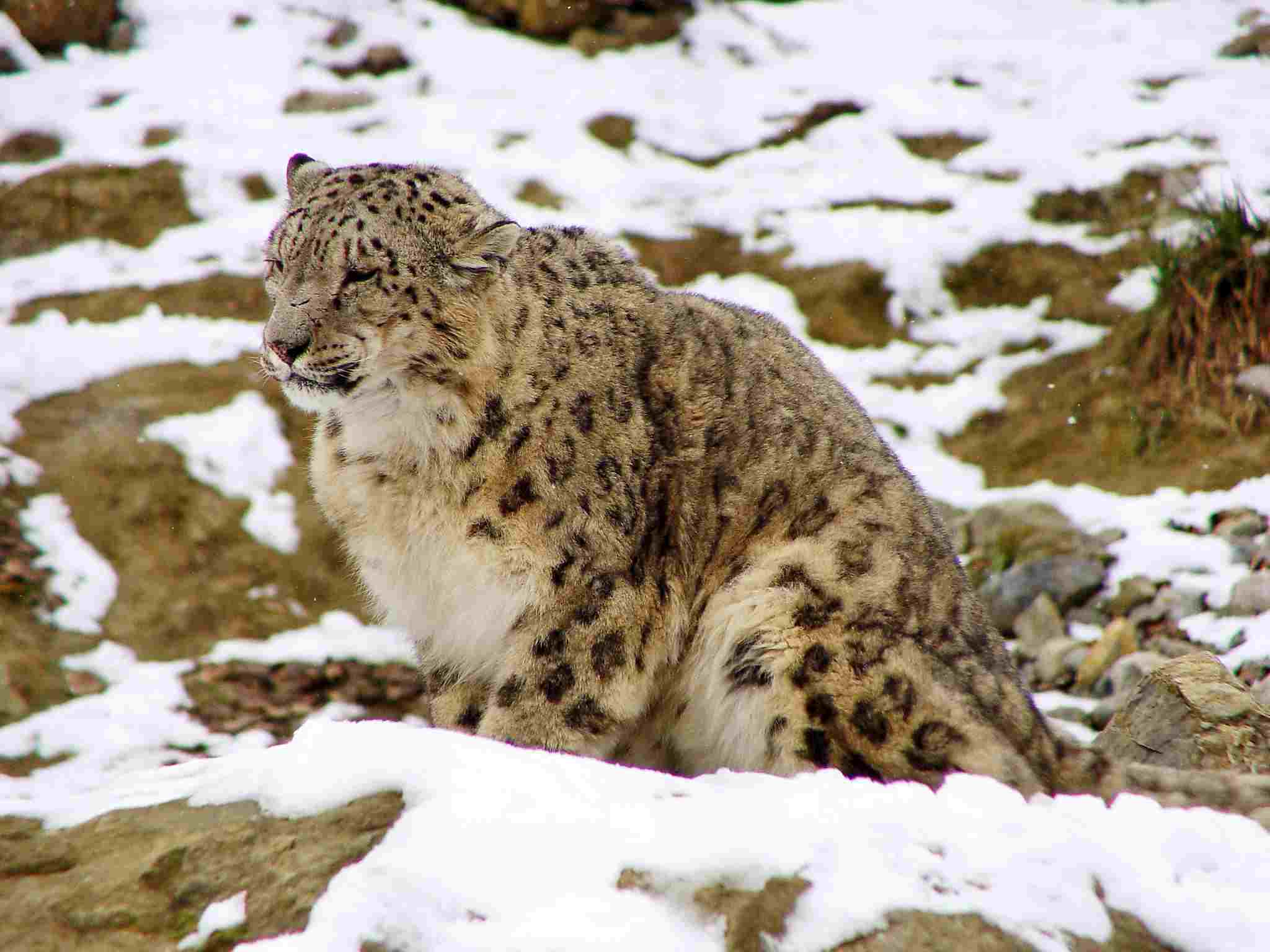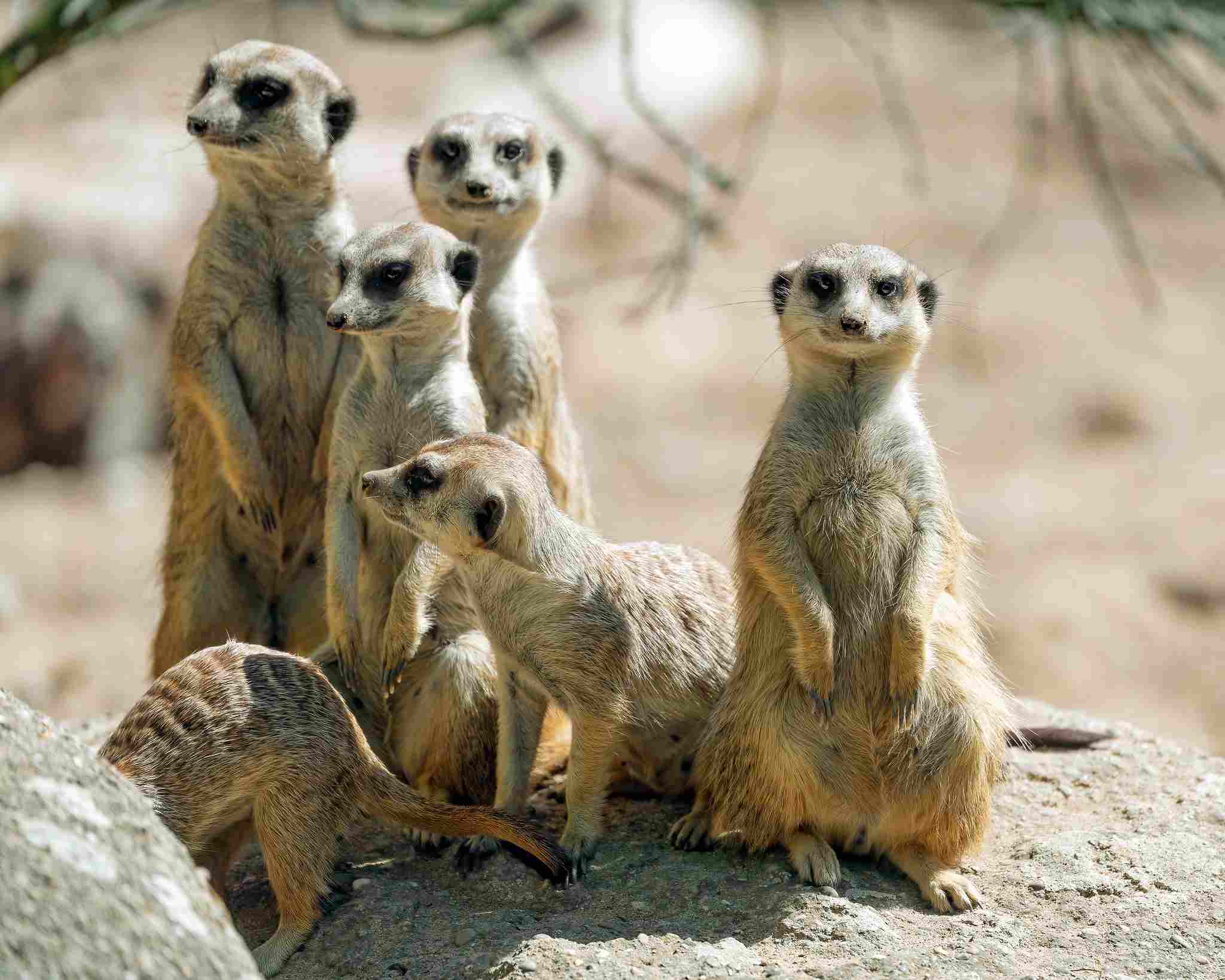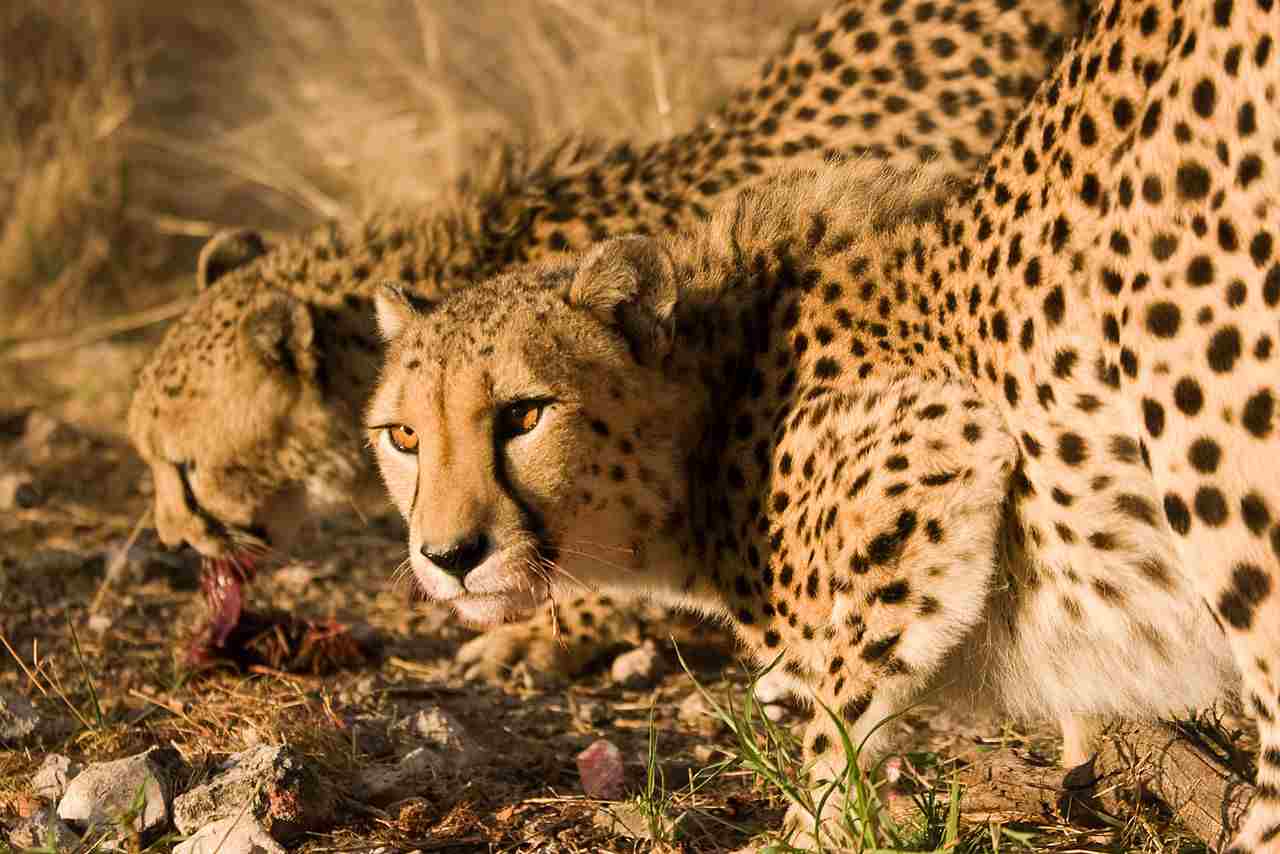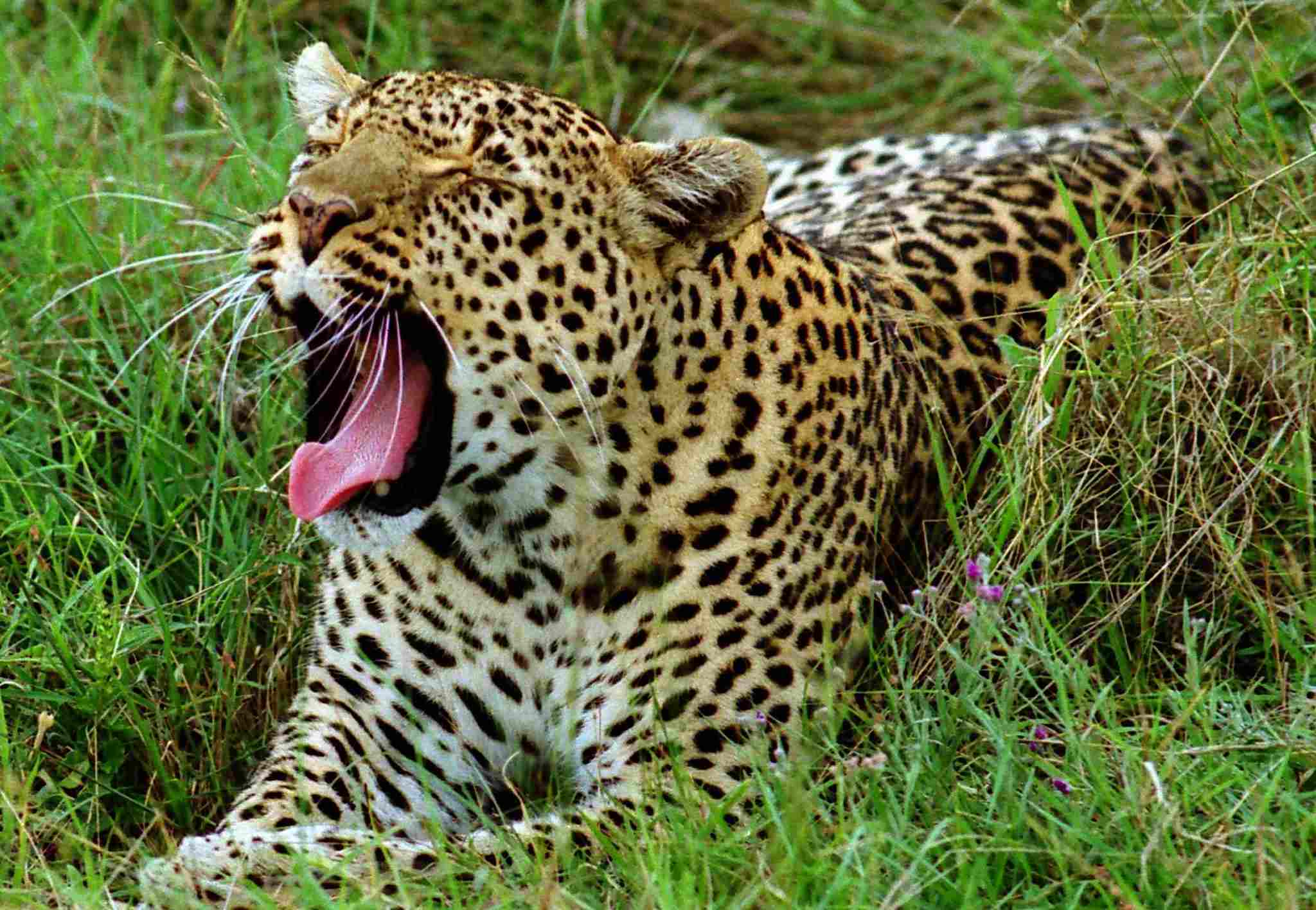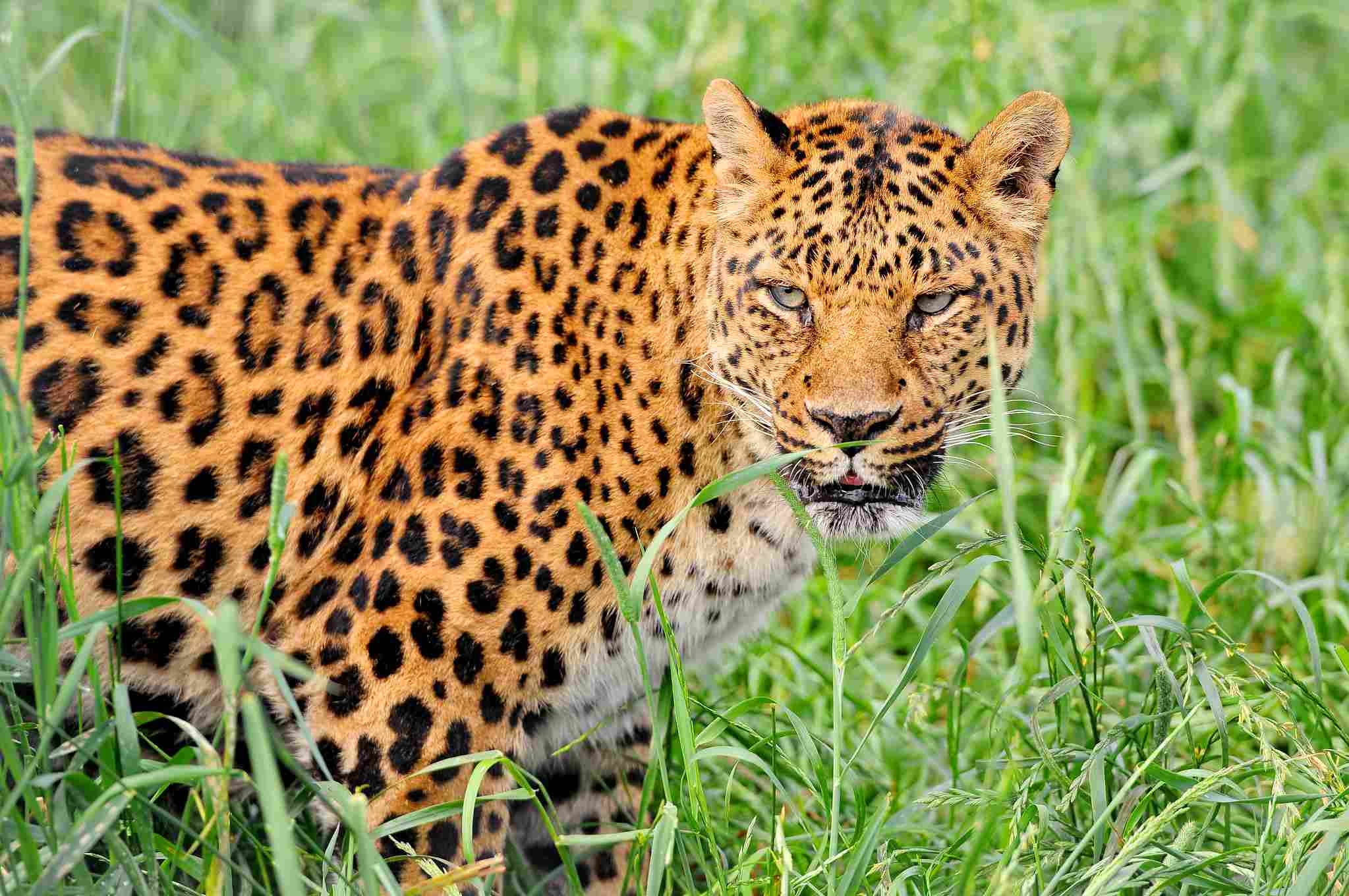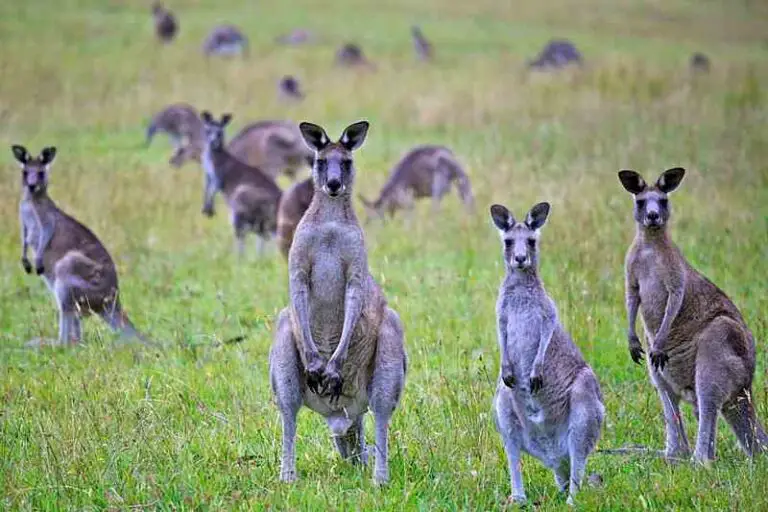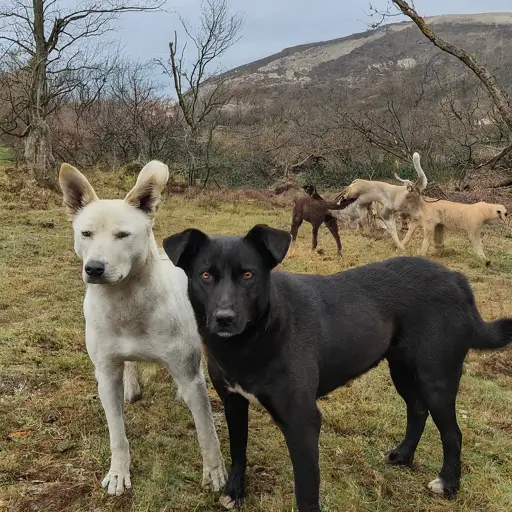11+ Carnivores in The Serengeti and Their Characteristics
Examples of carnivores in the Serengeti include lions, leopards, cheetahs, hyenas, and African wild dogs. These carnivores play vital roles in the ecosystem, regulating prey populations and contributing to overall biodiversity. Conservation efforts are underway to protect their habitats and mitigate threats such as habitat loss, human-wildlife conflict, and poaching. It’s essential for visitors to follow park regulations and guidelines to ensure the safety of both humans and carnivores in the Serengeti.
1. Common Jackal:
The Common Jackal, scientifically known as Canis aureus, is a fascinating carnivore found in the Serengeti ecosystem. Despite being commonly overlooked compared to the larger predators like lions and leopards, Common Jackals play a crucial role in maintaining the delicate balance of the ecosystem. These medium-sized canids are highly adaptable and are often found in a variety of habitats, ranging from grasslands to forests.
In the Serengeti, Common Jackals primarily feed on small mammals, birds, insects, fruits, and carrion. They are skilled hunters and scavengers, utilizing their keen senses of sight, smell, and hearing to locate prey and carcasses. Their omnivorous diet allows them to survive in diverse environments and helps regulate the population of prey species, thus indirectly impacting the vegetation and overall ecosystem dynamics.
Common Jackals are social animals, typically forming monogamous pairs or small family groups. Their social structure facilitates cooperative hunting and territorial defense. They communicate through a variety of vocalizations, including howls, barks, and yips, which serve to maintain group cohesion and delineate territories.
While Common Jackals are not apex predators, they still face various threats in the Serengeti, including habitat loss, human-wildlife conflict, and diseases transmitted by domestic animals. Conservation efforts in the region aim to mitigate these threats and ensure the long-term survival of these resilient and ecologically important carnivores.
2. Black-Backed Jackal:
The Black-Backed Jackal, scientifically known as Canis mesomelas, is another notable carnivore inhabiting the Serengeti ecosystem. Named for the distinctive black fur along its back, this species is closely related to the Common Jackal but exhibits some behavioral and ecological differences. Black-Backed Jackals are typically found in savannas, woodlands, and scrublands, where they forage for a variety of prey, including small mammals, birds, insects, and carrion.
Unlike the Common Jackal, Black-Backed Jackals are more solitary in nature, although they may form temporary pairs or small groups for hunting and territorial defense. They are highly territorial animals, marking their boundaries with urine, feces, and glandular secretions. These territorial behaviors help regulate population densities and minimize competition with other carnivores in the ecosystem.
Black-Backed Jackals are opportunistic feeders, adapting their diet based on seasonal availability and local conditions. They are known for their remarkable intelligence and cunning hunting strategies, often employing teamwork to outsmart their prey. Despite their relatively small size, Black-Backed Jackals are efficient predators and play a vital role in controlling rodent populations and scavenging carrion, thereby contributing to ecosystem health and stability in the Serengeti.
Conservation efforts focused on protecting the habitats of Black-Backed Jackals also benefit numerous other species within the Serengeti ecosystem, highlighting the interconnectedness of biodiversity conservation.
3. Lion:
The lion, scientifically known as Panthera leo, holds an iconic status as the apex predator of the Serengeti. These majestic big cats are symbols of strength, power, and royalty, and their presence dominates the African savanna landscape. Lions are highly social animals, forming prides consisting of multiple related females, their offspring, and a coalition of one or more adult males.
In the Serengeti, lions primarily prey on large herbivores such as wildebeest, zebras, and buffalo. Their hunting prowess is legendary, often involving coordinated teamwork and stealthy ambushes to bring down prey much larger than themselves. Lion prides establish territories that they defend against rival prides and intruders, with dominant males playing a crucial role in protecting their pride and ensuring reproductive success.
Despite their status as apex predators, lions face numerous threats in the modern world, including habitat loss, human-wildlife conflict, poaching, and diseases like canine distemper and tuberculosis. Conservation efforts focused on preserving lion habitats, mitigating human-wildlife conflicts, and combating illegal wildlife trade are essential for the long-term survival of these iconic carnivores in the Serengeti and beyond.
4. Leopard:
The leopard, scientifically known as Panthera pardus, is a solitary and elusive carnivore that roams the Serengeti ecosystem with stealth and grace. Renowned for their exceptional climbing abilities and ambush hunting tactics, leopards are highly adaptable predators capable of thriving in a variety of habitats, including grasslands, woodlands, and mountainous regions.
In the Serengeti, leopards prey on a diverse range of animals, including antelopes, warthogs, and smaller mammals like rodents and monkeys. They are opportunistic hunters, often relying on stealth and camouflage to stalk their prey before launching a surprise attack. Leopards are also skilled climbers, using trees as vantage points to survey their surroundings and cache their kills away from scavengers like hyenas and lions.
Despite their solitary nature, leopards have overlapping territories, which they mark with scent glands and scratch marks to delineate their boundaries and communicate with other individuals. Female leopards are particularly territorial, fiercely defending their hunting grounds and offspring from intruders.
Like other carnivores in the Serengeti, leopards face threats such as habitat loss, poaching, and human-wildlife conflict. Conservation efforts aimed at preserving their habitats, reducing illegal hunting, and promoting coexistence with local communities are essential for ensuring the survival of these magnificent predators in the wild.
5. Cheetah:
The cheetah, scientifically known as Acinonyx jubatus, is an iconic carnivore known for its incredible speed and agility. In the vast plains of the Serengeti, cheetahs are perfectly adapted for chasing down prey over long distances, making them one of the most specialized predators in the ecosystem. With their slender bodies, distinctive black spots, and tear-shaped markings, cheetahs are easily recognizable and hold a special place in the hearts of wildlife enthusiasts around the world.
Cheetahs primarily prey on small to medium-sized ungulates such as gazelles, impalas, and springboks. Their hunting strategy relies on bursts of acceleration, allowing them to reach speeds of up to 60 miles per hour in a matter of seconds. However, this incredible speed comes at a cost, as cheetahs have relatively low stamina and need to rest after a sprint. As a result, they are vulnerable to losing their kills to larger predators like lions and hyenas.
Despite their formidable hunting abilities, cheetahs face numerous threats in the Serengeti, including habitat loss, human-wildlife conflict, and competition with other predators. Their populations are also genetically vulnerable due to low genetic diversity, making them susceptible to diseases and environmental changes.
Conservation efforts focused on protecting cheetah habitats, mitigating human-wildlife conflict, and implementing measures to reduce poaching are crucial for ensuring the long-term survival of these magnificent cats in the Serengeti and beyond.
6. Spotted Hyena:
The spotted hyena, scientifically known as Crocuta crocuta, is a highly adaptable and social carnivore found throughout the Serengeti ecosystem. Despite their somewhat controversial reputation as scavengers, spotted hyenas are skilled hunters and play a vital role in maintaining the balance of the ecosystem as both predators and scavengers.
Spotted hyenas live in large, hierarchical clans led by a dominant female known as the matriarch. Within these clans, individuals cooperate during hunts and share access to food resources, with females typically outranking males in the social hierarchy. Their powerful jaws and bone-crushing teeth enable them to consume a wide range of prey, including wildebeest, zebras, and even large carcasses left behind by other predators.
In addition to hunting, spotted hyenas are proficient scavengers, often following vultures and other scavengers to locate carrion. Their adaptability and opportunistic feeding habits allow them to thrive in diverse habitats, from grasslands to woodlands.
Despite their adaptability, spotted hyenas face threats such as habitat loss, human-wildlife conflict, and persecution by humans due to misconceptions about their behavior. Conservation efforts aimed at protecting hyena habitats, promoting coexistence with local communities, and combating illegal hunting are essential for ensuring the survival of these fascinating carnivores in the Serengeti and beyond.
7. African Wild Dog:
The African wild dog, scientifically known as Lycaon pictus, is one of the most endangered carnivores in Africa, including the Serengeti ecosystem. Known for their distinctive mottled coats and highly social behavior, African wild dogs once roamed across much of sub-Saharan Africa but have experienced significant population declines due to habitat loss, human-wildlife conflict, and diseases transmitted by domestic dogs.
African wild dogs live in packs led by an alpha pair, which are usually the only individuals allowed to breed within the group. Pack members cooperate during hunts, using teamwork and stamina to pursue and exhaust their prey, which can include antelopes, gazelles, and other small to medium-sized ungulates.
Unlike many other carnivores, African wild dogs are diurnal hunters, preferring to hunt during the cooler hours of the day. Their success rate in hunting is among the highest of any carnivore, with studies suggesting they are successful in up to 80% of their hunts.
Despite their efficiency as hunters, African wild dogs face numerous threats, including habitat fragmentation, persecution by humans, and infectious diseases such as canine distemper and rabies. Conservation efforts focused on protecting their habitats, mitigating human-wildlife conflict, and implementing disease management strategies are crucial for ensuring the survival of these charismatic and endangered carnivores in the Serengeti and beyond.
8. Mongoose:
Mongooses are small carnivores belonging to the family Herpestidae, and several species can be found in the Serengeti ecosystem. They are known for their agility, intelligence, and remarkable ability to take on venomous snakes, making them valuable members of the ecosystem. Mongooses have long, slender bodies with short legs and tails, adapted for swift movement through dense vegetation.
In the Serengeti, mongooses primarily feed on insects, rodents, birds, eggs, and occasionally reptiles. They are diurnal animals, meaning they are active during the day, and they often forage in groups, which provides them with added protection against predators. Mongooses are also known for their complex social structures, with some species living in hierarchical groups led by a dominant breeding pair.
One of the most fascinating aspects of mongooses is their ability to take on venomous snakes, including cobras and puff adders, using their speed, agility, and coordinated attacks. This behavior not only helps control snake populations but also provides an important ecological service by reducing the risk of snakebite for humans and other animals in the ecosystem.
Despite their important role in the ecosystem, mongooses face threats such as habitat loss, human encroachment, and persecution by humans due to conflicts with poultry farming. Conservation efforts aimed at protecting their habitats, raising awareness about their ecological importance, and promoting coexistence with local communities are essential for ensuring the survival of mongooses in the Serengeti and beyond.
9. African Rock Python:
The African rock python, scientifically known as Python sebae, is one of the largest snake species found in the Serengeti ecosystem. These non-venomous constrictors are apex predators, capable of preying on a wide range of animals, including mammals, birds, and reptiles. With their impressive size, powerful bodies, and excellent camouflage, African rock pythons are formidable hunters and play a crucial role in regulating prey populations in their habitats.
African rock pythons are predominantly nocturnal, hunting under the cover of darkness to ambush unsuspecting prey. They rely on their keen sense of smell and heat-sensing pits to locate potential meals, striking with lightning speed and constricting their victims with powerful coils before swallowing them whole. Despite their large size, African rock pythons are surprisingly agile climbers and swimmers, allowing them to access a variety of prey and habitats.
While African rock pythons are not typically aggressive towards humans, encounters can occasionally result in conflict, especially when pythons are perceived as a threat to livestock or human safety. As a result, these magnificent snakes often face persecution and habitat destruction, leading to declines in their populations across Africa, including the Serengeti.
Conservation efforts focused on protecting the habitats of African rock pythons, raising awareness about their ecological importance, and implementing measures to mitigate human-wildlife conflict are essential for ensuring the survival of these iconic reptiles in the Serengeti and beyond.
10. Puff Adder:
The puff adder, scientifically known as Bitis arietans, is a venomous snake species found throughout sub-Saharan Africa, including the Serengeti ecosystem. Named for its defensive behavior of inflating its body and hissing loudly when threatened, the puff adder is known for its potent venom and ambush hunting tactics.
Puff adders are highly adaptable snakes, capable of thriving in a variety of habitats, from grasslands and savannas to forests and scrublands. They are primarily nocturnal hunters, relying on camouflage and patience to ambush prey, which includes small mammals, birds, and reptiles. Puff adders are sit-and-wait predators, often lying motionless for hours until unsuspecting prey wanders within striking distance.
Despite their relatively sluggish appearance, puff adders are capable of lightning-fast strikes, delivering potent venom with their long fangs. Their venom contains a potent cytotoxin that causes tissue damage and necrosis at the site of the bite, making puff adder bites potentially lethal to humans and other animals. As a result, puff adders are feared and often persecuted by humans, leading to declines in their populations in some areas.
Conservation efforts aimed at raising awareness about the ecological importance of puff adders, promoting snakebite prevention and treatment measures, and implementing measures to reduce human-snake conflict are essential for ensuring the survival of these fascinating but misunderstood reptiles in the Serengeti and beyond.
11. Mamba:
The mamba is a group of highly venomous snakes belonging to the genus Dendroaspis, with the black mamba (Dendroaspis polylepis) being the most notorious species found in the Serengeti ecosystem. Known for its speed, agility, and potent neurotoxic venom, the black mamba is one of Africa’s deadliest snakes, capable of delivering a lethal bite to both humans and animals.
Black mambas are large, slender snakes with distinctive coffin-shaped heads and olive to brownish-black coloration. Despite their name, black mambas are not always black; their coloration can vary depending on factors such as age, geographic location, and individual variation. They are diurnal hunters, actively foraging for prey such as small mammals, birds, and reptiles, which they capture using their speed and agility.
Black mambas are renowned for their aggressive defensive behavior when threatened, often raising their heads and displaying their distinctive black mouths as a warning signal. Despite their intimidating reputation, black mambas are typically shy and elusive snakes, preferring to avoid confrontations with humans whenever possible.
Encounters between black mambas and humans are relatively rare but can be dangerous if not handled properly. Due to their potent neurotoxic venom and rapid-acting nature, black mamba bites require prompt medical attention and antivenom therapy to prevent fatalities.
Conservation efforts focused on raising awareness about snakebite prevention, promoting coexistence with black mambas in their natural habitats, and combating illegal wildlife trade are essential for ensuring the survival of these iconic but misunderstood snakes in the Serengeti and beyond.
12. African Harrier-Hawk:
The African harrier-hawk, scientifically known as Polyboroides typus, is a unique raptor species found in the Serengeti ecosystem. Unlike most birds of prey, African harrier-hawks have distinctive facial feathers and long, double-jointed legs adapted for navigating through dense vegetation in search of prey.
African harrier-hawks are highly specialized hunters, often using their long legs to reach into crevices and holes to extract prey such as rodents, reptiles, insects, and birds from their hiding places. Their agility and adaptability allow them to thrive in a variety of habitats, including grasslands, woodlands, and urban areas.
In addition to hunting, African harrier-hawks are known for their cooperative breeding behavior, with pairs working together to build nests, incubate eggs, and raise young. They are monogamous birds, typically forming long-term pair bonds that last throughout the breeding season.
Despite their relatively widespread distribution, African harrier-hawks face threats such as habitat loss, pesticide poisoning, and persecution by humans due to conflicts with poultry farming. Conservation efforts aimed at protecting their habitats, raising awareness about their ecological importance, and implementing measures to mitigate human-wildlife conflict are essential for ensuring the survival of these fascinating raptors in the Serengeti and beyond.
13. Black-Winged Kite:
The black-winged kite, scientifically known as Elanus caeruleus, is a small raptor species found in the Serengeti ecosystem. Known for its distinctive black shoulder patches and hovering hunting behavior, the black-winged kite is a common sight in grasslands, savannas, and agricultural areas throughout Africa.
Black-winged kites are agile hunters, specializing in capturing small mammals, birds, insects, and reptiles on the wing. They are often observed hovering in mid-air, scanning the ground below for signs of movement before diving down to seize their prey with their sharp talons. Their keen eyesight and aerial hunting skills make them formidable predators despite their relatively small size.
In addition to hunting, black-winged kites are known for their intricate courtship displays, which involve aerial acrobatics and vocalizations to attract mates. Once pairs form, they work together to build nests, incubate eggs, and raise young, with both parents sharing responsibilities for feeding and caring for the offspring.
Despite their adaptability and widespread distribution, black-winged kites face threats such as habitat loss, pesticide poisoning, and electrocution from power lines. Conservation efforts focused on protecting their habitats, mitigating human-wildlife conflict, and promoting sustainable land management practices are essential for ensuring the survival of these charismatic raptors in the Serengeti and beyond.
*Summary
-
Common Jackal (Canis aureus):
-
Found in Serengeti ecosystem
-
Omnivorous diet: small mammals, birds, insects, fruits, carrion
-
Social animals: monogamous pairs or small family groups
-
Play crucial role in ecosystem balance
-
-
Black-Backed Jackal (Canis mesomelas):
-
Distinctive black fur along back
-
Solitary nature, territorial behavior
-
Opportunistic feeders: small mammals, birds, insects, carrion
-
Play important role in controlling rodent populations
-
-
Lion (Panthera leo):
-
Apex predator of Serengeti
-
Live in prides: multiple females, offspring, male coalition
-
Hunt large herbivores: wildebeest, zebras, buffalo
-
Face threats: habitat loss, human-wildlife conflict, diseases
-
-
Leopard (Panthera pardus):
-
Solitary, elusive carnivores
-
Climbers and ambush hunters
-
Prey on diverse range of animals: antelopes, warthogs, rodents
-
Threatened by habitat loss, poaching, human-wildlife conflict
-
-
Cheetah (Acinonyx jubatus):
-
Known for incredible speed and agility
-
Specialized in chasing down prey over long distances
-
Primarily hunt small to medium-sized ungulates
-
Face threats: habitat loss, human-wildlife conflict, low genetic diversity
-
-
Spotted Hyena (Crocuta crocuta):
-
Highly adaptable and social carnivores
-
Live in hierarchical clans led by dominant females
-
Hunt and scavenge: large herbivores, carrion
-
Face threats: habitat loss, human-wildlife conflict, persecution
-
-
African Wild Dog (Lycaon pictus):
-
Endangered carnivores, highly social in packs
-
Cooperative hunters: antelopes, gazelles
-
Diurnal hunters, face threats: habitat loss, diseases, human-wildlife conflict
-
-
Mongoose:
-
Small carnivores, agile and intelligent
-
Forage in groups, eat insects, rodents, birds
-
Known for taking on venomous snakes, important for ecosystem balance
-
Threatened by habitat loss, human encroachment, persecution
-
-
African Rock Python (Python sebae):
-
Large constrictors, prey on variety of animals
-
Nocturnal hunters, ambush prey
-
Threatened by habitat loss, persecution, and misconceptions
-
-
Puff Adder (Bitis arietans):
-
Venomous snakes, ambush predators
-
Prey on small mammals, birds, reptiles
-
Face threats: habitat loss, persecution, human-snake conflict
-
-
Mamba (Dendroaspis spp.):
-
Highly venomous snakes, including black mamba
-
Diurnal hunters, primarily eat small mammals, birds, reptiles
-
Face threats: habitat loss, persecution, snakebite incidents
-
-
African Harrier-Hawk (Polyboroides typus):
-
Unique raptors with long legs
-
Specialized hunters, eat rodents, reptiles, birds
-
Face threats: habitat loss, pesticide poisoning, human conflict
-
-
Black-Winged Kite (Elanus caeruleus):
-
Small raptors with distinctive hovering behavior
-
Feed on small mammals, birds, insects
-
Face threats: habitat loss, pesticide poisoning, human conflict
-
| Carnivores | Summary |
| Common Jackal |
Found in Serengeti, omnivorous diet, social animals, crucial for ecosystem balance
|
| Black-Backed Jackal |
Solitary, opportunistic feeders, play role in controlling rodent populations
|
| Lion |
Apex predator, live in prides, hunt large herbivores, threatened by habitat loss and conflict
|
| Leopard |
Solitary, ambush hunters, prey on diverse animals, threatened by habitat loss and poaching
|
| Cheetah |
Known for speed, hunt small to medium-sized ungulates, threatened by habitat loss
|
| Spotted Hyena |
Highly adaptable, live in hierarchical clans, hunt and scavenge, face threats of persecution
|
| African Wild Dog |
Endangered, highly social in packs, cooperative hunters, threatened by habitat loss
|
| Mongoose |
Agile and intelligent, forage in groups, important for ecosystem balance, threatened by human conflict
|
| African Rock Python |
Large constrictors, prey on variety of animals, threatened by habitat loss and persecution
|
| Puff Adder |
Venomous snakes, ambush predators, prey on small mammals, threatened by human-snake conflict
|
| Mamba |
Highly venomous, diurnal hunters, prey on small mammals, threatened by persecution
|
| African Harrier-Hawk |
Unique raptors with long legs, specialize in hunting rodents and reptiles, face threats of habitat loss and human conflict
|
| Black-Winged Kite |
Small raptors with hovering behavior, feed on small mammals and birds, threatened by habitat loss and human conflict
|
FAQs about Carnivores in the Serengeti
Q: Are carnivores in the Serengeti dangerous to humans? A: While interactions between carnivores and humans in the Serengeti are rare, some species can pose a threat if provoked or surprised. It’s essential for visitors to follow park regulations and guidelines to minimize the risk of encounters.
Q: How do carnivores contribute to the Serengeti ecosystem? A: Carnivores play crucial roles in maintaining ecosystem balance by controlling prey populations, preventing overgrazing, and influencing vegetation dynamics. They also help regulate prey species, preventing outbreaks of disease and ensuring overall ecosystem health.
Q: What conservation efforts are in place to protect carnivores in the Serengeti? A: Conservation organizations and national park authorities implement various initiatives, including habitat preservation, anti-poaching patrols, community outreach programs, and research projects focused on carnivore behavior and ecology.
Q: What should I do if I encounter a carnivore while visiting the Serengeti? A: Visitors should remain calm, avoid sudden movements, and give the animal plenty of space. It’s essential to follow park guidelines and instructions from park rangers or guides. In the unlikely event of an encounter, maintaining a respectful distance and not disturbing the animal is key for safety.
Q: How can I support carnivore conservation efforts in the Serengeti? A: You can support conservation organizations working in the region through donations, volunteering opportunities, and raising awareness about the importance of protecting carnivores and their habitats. Additionally, practicing responsible tourism and supporting sustainable practices can help minimize human impact on wildlife.
